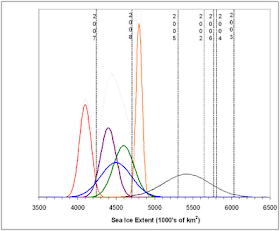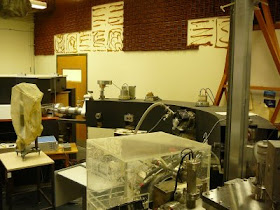A while ago I was looking at a job opening in one of the world’s best geochemistry labs. Asking people in the know, I got the following advice:
“If you’re gonna apply, do it fast. They don’t hold a traditional search, they just take the first qualified applicant.”
I was taken aback by this, but I don’t know why. After all, this is how positions in the real world are filled. A job needs to be done, so when someone who can do it shows up, they’re hired. A job is not a gift to be bestowed on the winner of a competition; It is something that has to be done. And in the case of this particular lab, the approach obviously works well for them. They are the best at what they do. So I started wondering: Why isn’t this approach used more often. And I wondered some more: Would such an approach help bridge the gender gap?
Pondering the last question, I think that it depends on the cause of the gap. Let’s assume two endmember causes for underrepresentation of female hiring at high levels in academia. The first endmember assumes that everybody in the selection processes that produce male bias is slightly biased against women. The second assumes that a small number of selectors are strongly biased*.
If the second case holds true, then those institutions saddled with such a person will always find an excuse not to hire women no matter what, so the search methodology is irrelevant.
With the first case, if you have a bunch of almost equal people competing for a spot, then subtle biases could end up making the difference that gives the job to a male. But if they simply hire the first qualified person to come along, then that subtle difference shouldn’t matter, as long as the advertising process is open and honest. Obviously, that’s a big if- a first come first serve practice could easily be corrupted by an old boys network**.
On the practical side, A first qualified candidate will generally enhance the productivity of the selectors, as the service commitment would generally be smaller. And if it works faster, it would be more amenable to researchers who have a family to support and can’t wait around for 15 months while a process slowly churns. But I honestly don’t know what the gender breakdown for scientist heads of households is, so I can’t say if that’s gender related or not.
* Note that overt bias is illegal and/or socially unacceptable in a growing number of countries these days. So the sort of person I’m talking about here is someone who claims to be fair-minded in principle, but always finds a reason to disqualify any specific woman who interacts with his sphere of influence. Whether this is done consciously or unconsciously is irrelevant for the present argument.
** Assuming that most labs are run by old boys- otherwise, it could be corrupted by the Nefarious Web of Quazinonymous Women Bloggers in the opposite direction.
















